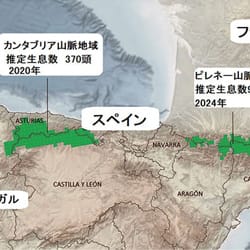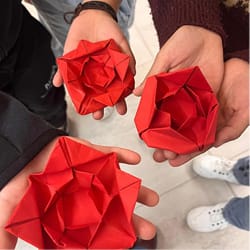
Photo 1
And next to the cathedral is the “Real Alcázar de Sevilla,” a villa of the Spanish royal family. Construction of the palace commenced in the 14th century, and it has been registered as a World Heritage site. The marriage of the Spanish Emperor Charles V to the Empress Consort Isabella of Portugal took place at the palace on March 11, 1526. The orange tree that the royal couple planted at the time is still alive and well, so the 1,053 orange trees growing in the palace’s 7-hectare gardens might have inherited its DNA.
Like the Japanese bitter orange, the fruit of this citrus variety does not lend itself to being eaten fresh, given its bitterness and sourness, and in Spain, the tree is only used for ornamental purposes in gardens and as roadside trees, while the flowers are highly prized as the raw material for perfumes. The fruit contains a lot of pectin, a food fiber and gelling agent, which makes it better suited to marmalade, so it is a must-have item at breakfast especially for the British, where for most families it is customary to make a year’s worth of marmalade using a family recipe passed down generations and large amounts of oranges obtained around the start of the year. Orthodox marmalade makers particularly delight in using bitter oranges from Seville, as in photo 2.

Photo 2
Incidentally, Alfonso XIII, the great-grandfather of His Majesty King Felipe VI, the reigning King of Spain, took as his queen Victoria Eugenie, a granddaughter of Queen Victoria (of Britain). When their Majesties stayed at the Real Alcázar de Sevilla on royal visits, Her Majesty the Queen used to send some oranges growing in the palace garden in winter to her own family, the British royal family, to make marmalade. These orange deliveries stopped for a time but were happily restored in 2020. The Seville orange deliveries are turned into marmalade by Wilkins & Sons (appointed by the royal family), before being presented at court.
Then once in 2022, Mr. Hugh Elliott, Ambassador Plenipotentiary of the United Kingdom to Spain, had some oranges from the garden at the Alcázar sent to him in Madrid, made some marmalade himself according to his family’s longstanding recipe, and presented it to Buckingham Palace. Photo 3 shows the Ambassador making the marmalade in his official residence in Madrid. The caption on the picture says, “Making marmalade with bitter oranges is a long-standing tradition in Britain and in my own family.”

Photo 3
In 2022, Queen Elizabeth invited Paddington Bear to afternoon tea at Buckingham Palace on the 3rd day of the Platinum Jubilee celebrations marking the 70th anniversary of her coronation. At the afternoon tea, she popped out a marmalade sandwich she had been hiding in one of her favored Launer handbags. The marmalade spread on that bread might have been the marmalade the Ambassador in Madrid made by hand using Seville oranges. Photo 4 shows the marmalade sandwich Her Majesty always has on hand in case of an emergency.

Photo 4
While I’m at it, bitter oranges from Seville show up on shelves in supermarkets and the like in the UK around January to February, but I have never seen them for sale in ordinary shops in Spain. Here they gather up the fruit and use it as animal feed, fertilizer, or feedstock for biomass electricity generation. Unlike the Spaniards, who would never think of making anything to eat out of Seville oranges, in my thrifty household we pick up oranges that have fallen from the roadside trees, squeeze the juice, mix it with soy sauce, and use it as a kind of ponzu (citrus and soy) sauce.






























































